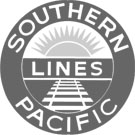Fallon
"The Oasis of Nevada"
Ranches began to develop in the Lahontan Valley along the Carson River in the early 1860s. In those early days, the town of St. Clair grew to serve the area. In 1896, Mike and Eliza Fallon settled 3 miles north of St. Clair and opened a post office on their new ranch. Soon, Jim Richards operated a general store on the Fallons' land at the main crossroads in the valley (which became known as Jim's Town by the local Native Americans). In 1902, President Theodore Roosevelt signed the Reclamation Act presented by Nevada Representative Francis G. Newlands. The Lahontan Valley was chosen as the first reclamation project under the new law.

After the signing of the Reclamation Act, Mike Fallon sold his ranch to Warren W. Williams. In preparation for growth, Williams and neighbor John Oats began laying out and selling lots in the new townsite of Fallon. Williams laid out the north and west sides of town, while Oats laid out the east. The central street through town was called Maine Street, after Williams's home state. Interestingly, as the street was measured in strides and Williams was a taller man than Oats, Maine Street has a noticeable taper; the north end of the street is several feet wider than the south end. The next year, the Churchill County seat was moved to the new town from Stillwater, and several businesses soon followed. The completion of Derby Dam in 1903, the Truckee Canal in 1905, and Lahontan Dam in 1914 brought homesteaders to Fallon and the community grew. The Southern Pacific Railroad completed a branch to town from Hazen in 1907, and in 1908, the City of Fallon was incorporated.
Originally, plans expected Fallon to quickly exceed 20,000 residents. Unfortunately, these plans weren't fully realized and Fallon remained relatively small for years. Nevertheless, the town did slowly continue to grow through the early 20th century. Numerous crops were planted, and a large, though ill-fated, sugar factory was even built in the early years. By the 1920s, "Hearts-O-Gold" cantaloupes became a major export across the nation, and for a time turkeys raised in Fallon also gained national recognition; some even made it to the White House for Thanksgiving.
Fallon's continued growth was aided by its strategic location. In addition to a dedicated railroad line, the Lincoln Highway was routed through town, giving Fallon a direct link to nearby cities. Growth was further accelerated starting in the 1940s with the establishment of Naval Air Station Fallon. In the decades since, Fallon has grown to become one of Nevada's largest agricultural centers. Today, the city has a population of almost 9000 (though nearly 25,000 live in the immediate area). The historic core of the city is home to dozens of original buildings dating back to the early days, and Downtown Maine Street was listed as a National Historic District in 2019.




















































































